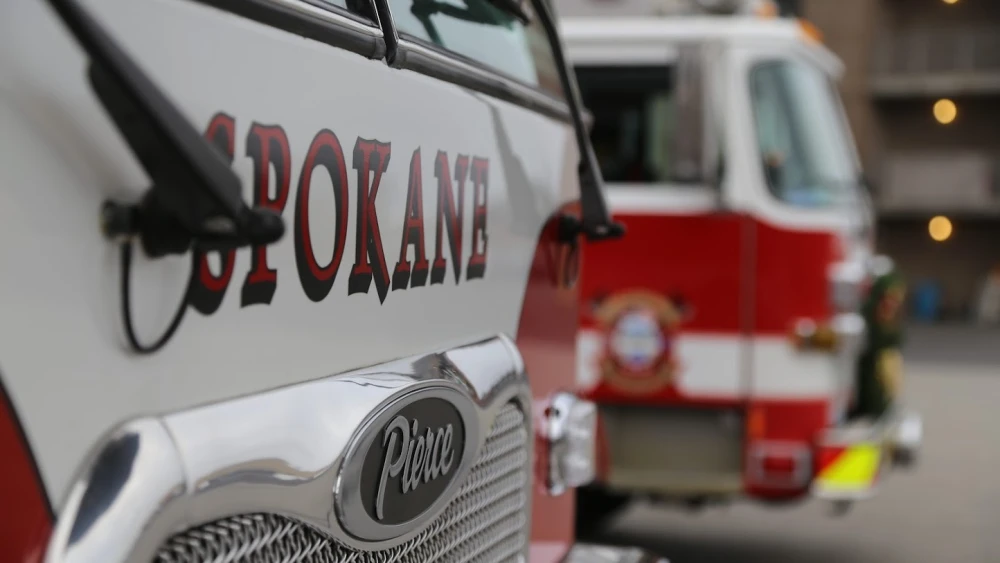A politically charged dispute between Spokane County and the City of Spokane has left vital firefighter rescue equipment in limbo for months — and at the center of the controversy lies confusion over sanctuary city policies, federal grant qualifications, and deepening rifts between local agencies.
The Dispute Over Rescue Gear
The conflict began earlier this year when Spokane County officials refused to release $63,000 worth of technical rescue equipment intended for Spokane’s Fire Department. The gear, funded by a federal emergency preparedness grant, is critical for rope rescues and other difficult operations involving steep terrain and confined spaces.
Initially, the county cited concerns that Spokane’s “sanctuary city” status might jeopardize federal funding, referencing a February City Council resolution supporting Washington’s Keep Washington Working Act, which limits local cooperation with federal immigration enforcement. However, Spokane officials maintain the city is not a sanctuary city in any legal sense.
Ironically, the Trump administration later named Spokane County — not the City of Spokane — as a sanctuary jurisdiction, briefly publishing the designation before removing it due to nationwide confusion over the criteria.
Delays and Changing Justifications
After backtracking on the sanctuary city claim, county officials offered a new rationale: Spokane had withdrawn from a regional emergency management agreement in December 2023, before Mayor Lisa Brown took office. Without that agreement, the county argued it couldn’t certify that Spokane met federal preparedness standards — a requirement for disbursing the funds.
Sheriff John Nowels later wrote to Mayor Brown, saying the city could still receive its equipment if it proved compliance with federal standards. Brown said the city is ready to do so and questioned why the reasons for withholding the gear kept changing.
“It’s almost like they made the decision to cut something to the city and then looked around for explanations as to why they did it,” Brown said.
She added that the delay jeopardized public safety, especially since Spokane firefighters make up nearly half of the region’s 90-member technical rescue team.
Political Fallout and Financial Strain
The disagreement reflects broader tensions between city and county leadership, exacerbated by past decisions to separate emergency services. Spokane previously created its own emergency management office, pulling $182,000 in annual funding from the county’s agency, a move that originated under former Mayor David Condon and was opposed by county officials at the time.
Now, the county’s Department of Emergency Management (DEM) is facing a funding crisis of its own. Despite trying to avoid federal scrutiny, $280,000 in DHS funding was cut anyway, slashing nearly one-third of the department’s staff and affecting training, communications, and disaster preparedness services.
“At this point, we are in some really unfortunate circumstances,” said Chandra Fox, the department’s deputy director. “I’ve been doing this for almost 30 years and I’ve never seen anything like this before.”
Life-Saving Efforts at Risk
The technical rescue equipment in question is far from symbolic. In March, two young boys became stranded on steep bluffs in Spokane. The multi-agency rescue operation, involving Spokane Fire, Spokane Valley, and Fire District 9, required coordinated use of ropes and gear to bring them to safety. Without proper and standardized equipment, such rescues are more dangerous and harder to execute.
Fire Chief Julie O’Berg emphasized the need for uniformity in gear between departments:
“If you’re going to function together as a team — and we truly function together as one unit — consistency in equipment is important.”
She added that there is no nearby jurisdiction capable of responding with the same level of skill and speed as the joint regional team.
Blame Game Continues
Mayor Brown has expressed frustration not just over the delays but also the tone of Sheriff Nowels’ criticisms, which she says are rooted in political disputes, not public safety concerns.
Nowels, meanwhile, claims Brown is twisting facts to fit her narrative, pointing out that Spokane often embraces sanctuary status rhetorically but disowns it legally when it threatens funding.
“She will say to whoever wants to hear it that they are a sanctuary city, and then when push comes to shove they are suddenly not,” Nowels said.
Still, even Nowels concedes that the county’s emergency capabilities are in jeopardy, not because of Spokane’s policies, but because of federal cuts the county could not avoid despite its attempts to comply.
Looking Ahead
While a resolution may be on the horizon, with the county ready to release the equipment once Spokane confirms its eligibility, the damage — both financial and political — may linger.
Brown urges local officials to direct their frustration where it belongs.
“I’d be happy to have [Nowels] join me in criticizing the Trump administration for pulling those funds,” she said.
As Spokane and its surrounding areas brace for future disasters — natural or otherwise — leaders will need to find common ground to restore cooperation and keep emergency systems functioning.
The deeper question remains: When political battles interfere with life-saving tools, who bears the risk? For now, it’s Spokane’s firefighters and the public they serve.














Leave a Reply